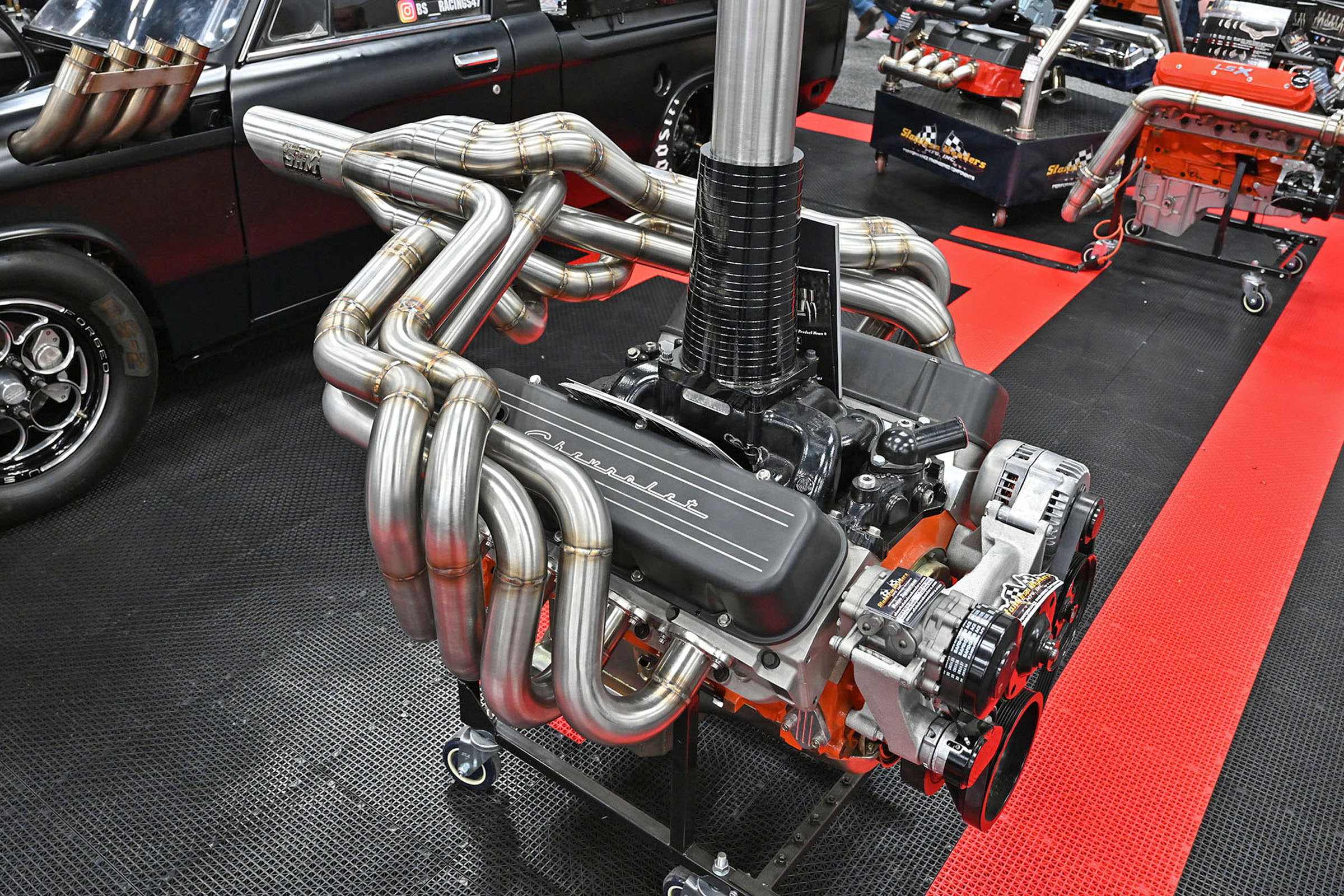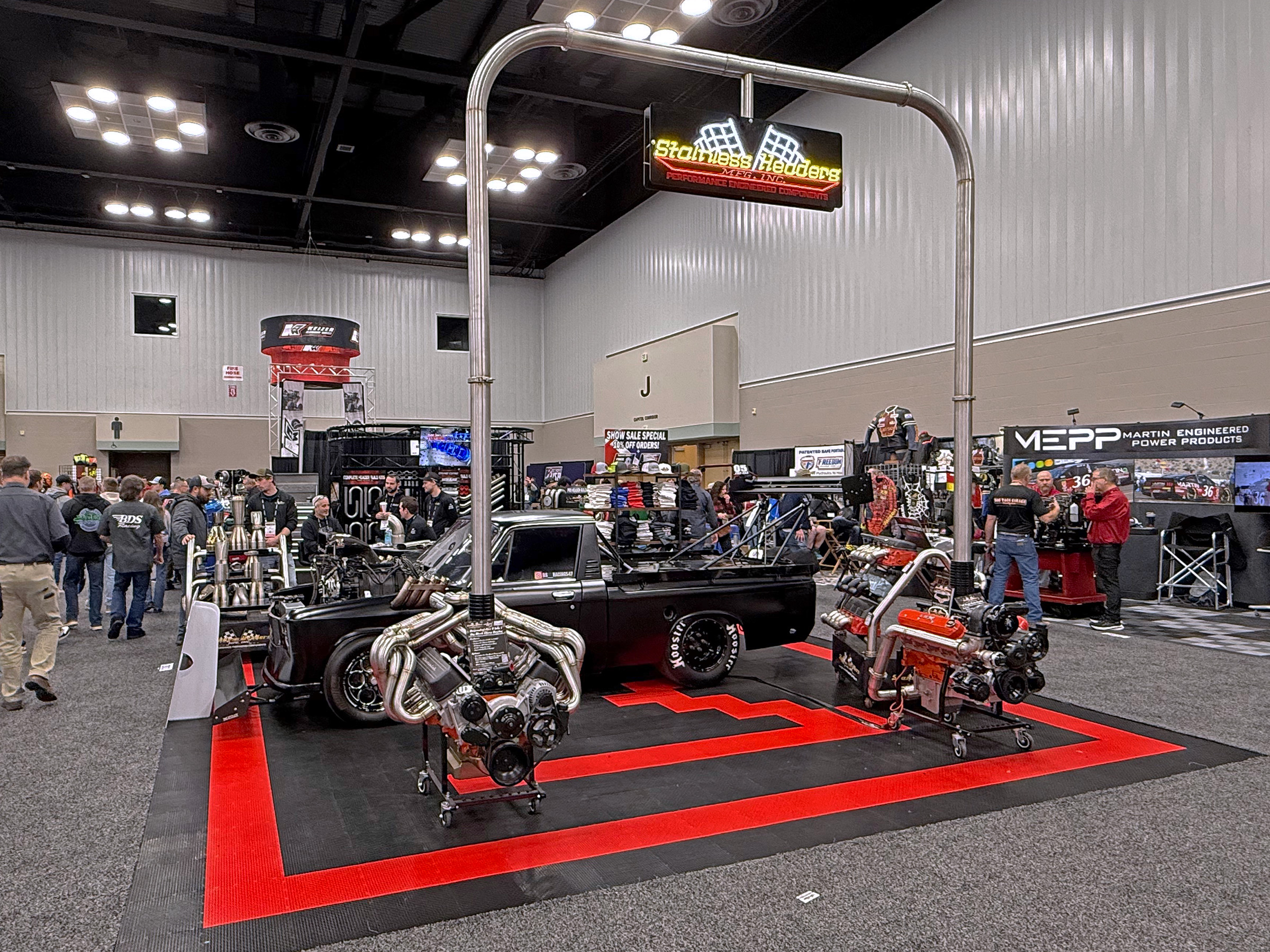Maximizing Iron Head Performance—Without Porting
 You can’t throw a stone these days without hitting an aftermarket aluminum cylinder head. They perform as good or better than anything the factories put out, and then some. They are much lighter than iron heads, and they’re now extremely affordable. Thanks to competition in the aftermarket, it could easily be said that for the performance and price benefits of a new set of aluminum heads, why would anyone bother refurbishing a set of iron castings?
You can’t throw a stone these days without hitting an aftermarket aluminum cylinder head. They perform as good or better than anything the factories put out, and then some. They are much lighter than iron heads, and they’re now extremely affordable. Thanks to competition in the aftermarket, it could easily be said that for the performance and price benefits of a new set of aluminum heads, why would anyone bother refurbishing a set of iron castings?
The answer is quite simple really: because aluminum heads are so affordable and plentiful, the prices for iron heads have plummeted, with high prices generally limited to specific castings and date codes that are coveted by restorers. Think about it. Are you going to pay the big dollars for a set of original, 2.02-inch “double-hump” heads and then spend the money to refurbish them for your next performance engine? Or would you spend the same amount of money getting a set of Edelbrock aluminum castings loaded with valves, screw-in studs, etc., that are ready to go right out of the box? And, oh yeah, the new aluminum pieces come with accessory mounting holes for your alternator and power steering brackets. We’re thinking mainly of small-block heads, but even big-block pieces aren’t worth what they once were a few years ago, thanks largely to the aftermarket.

That being said, there are still good reasons to go with an older set of iron castings—namely the pennies-on-the-dollar prices they’re going for these days. Small-block Chevy heads are some of the last good performance pieces you can still find in a junk yard, as 350 four-bolt engines are still plentiful in trucks. Or maybe, like us, you have a set of heads on an existing engine, and you just want to freshen them up. So why spend the money buying aluminum heads, when for a few hundred dollars you can improve the performance of the heads you already have? There’s no question that they are not weight-saving aluminum, and they may not flow as well (depending on your castings), but it’s not like we’re building an engine for a specific racing class. So we have affordable options. Aside from grudge racing and jackrabbit stoplight starts, most of us wouldn’t even notice the seat-of-the-pants difference between a decent set of properly done iron heads and new the aluminum ones, once the hood is closed.
We had on hand a decent set of small-block Chevy heads with the common 1.94/1.50-inch valves, and these heads were in great shape. But because we were upgrading the engine to roller rockers, which required machining the spring pockets, turning down the valve guide bosses and installing screw-in studs and guideplates, we took a closer look at what we had. These modifications, as you know, always seem to snowball, and since our heads were going to the machine shop, why not install the larger 2.02/1.60-inch valves? The heads were due for a valve job anyway, and the inclusion of a performance valve job would help performance. Also, the tops of more than a couple valve stems were beginning to show their age, which meant that valve replacement would make sense.

Installing bigger valves has been done for a very long time, and is generally done in conjunction with a full porting job, but it is not uncommon that big valve installation is the only upgrade made to the heads. Generally, machine shops have one price for installing bigger valves and another for opening the port under the valves. Some shops do not offer port work. And when offered, the expense can frequently drive up the price beyond most budgets. Many enthusiasts pass on the full Monty, figuring the bigger, more affordable valves alone should get them a nice increase in power.
The problem, however, is that unless the port work is done to open up the area under the valve, you are throwing your money away by not taking advantage of un-shrouding the larger valves. A bigger valve over the existing port is just like a bigger lid on the same small hole. It’s not going to flow better.

Look at it this way: You can cover the mouth of a soda bottle with a garbage can lid, but it isn’t going to increase flow out of the bottle. The ports within the cylinder head are much the same; without the necessary bowl work, larger valves are simply a bigger lid over the bottleneck. To get the most out of larger valves, you must open up the area underneath the valve.
The traditional way of installing larger valves is to open up the seats to accept the new valve. In the past, this was done using grinding stones. The three-angle valve job you always read about is accomplished using three different cone-shaped stones inserted into the seat (one at a time), each stone with a different angle. The first stone grinds one angle, the second another, and so on. The stones are centered on the seat with a shaft sticking through the valve guide to keep them centered on the seat, but the depth of the cut is done by eye. Here, patience and experience is a virtue—you don’t want someone in a hurry while doing this procedure. The three angles may in fact improve the flow somewhat, but again, the larger diameter of the valves isn’t doing all the good that they are capable of, unless the bowl under the valve is enlarged as well.

For this story, we asked machinist Jerry Wilt of Wilt Engine Services to demonstrate the procedure on an intake and exhaust seat. It took him the better part of 45 minutes to do a single-cylinder intake and exhaust—that’s one cylinder, not the entire head. So multiply that by eight to get an idea of the time involved for the whole job. He did a good job and paid careful attention, but it was time consuming and very dirty work. Plus, the port was still restrictive once he was done. Port work is expensive because it takes a tremendous amount of time and a steady hand. Additionally, there is a danger of wrecking the heads, or at least the valve seat, if the grinding burr nicks the seat on the way in or out of the head while the bowl is being worked on. This isn’t a problem with an experienced hand, but really good port-and-polish technicians are few and far between.
Wilt broke out the stones for our camera, so we could show you the tools that have been traditionally used. Although he has years of experience with them, it isn’t the way he installs bigger valves these days. While it is an expensive piece of equipment, a Serdi-style valve seat cutter, we are told, is the only tool to use for cutting new seats for bigger valves. It’s a two-step system; the first tool cutting a nice, neat three-angle valve seat, and the second tool making a plunge cut through the hole to remove excess material from behind the new seat, un-shrouding the valve in one pass.

Setting the demo head up in his machine, squaring everything, enlarging the intake and exhaust seat on one combustion chamber, and then cutting away the material below the seat, took about 12 minutes, start to finish. Once the machine is set up, it’s a simple matter of going down the head and doing all the intakes, changing to the cutter, and then doing the same on the exhaust side. Start to finish, it’s far less than an hour per head. Unlike grinding by hand, the depth of the Serdi cut is precise, and can be gauged and stopped, eliminating sunken seats that can happen when the hand-held grinder goes too far and removes too much material. Furthermore, the entire fixture helps ensure all the seats are identical in depth, which keeps valve stem height uniform on the topside. This helps when setting up valve springs and rocker geometry, not to mention greatly reducing the chances of operator error screwing up your heads.

It’s not a porting job, mind you, but with a little touch-up with a handheld grinder, it’s the best bigger-valves/three-angle valve job upgrade you can get, sans porting. Starting a full porting job with a Serdi takes hours off the job and all but eliminates the chances of gouging the seat with the hand grinder.
From what we have found, “Serdi” is the name of the company that developed the tool, and it’s the industry standard, much like Kleenex or Band-Aid. Besides the benefits we’ve listed, hardcore performance guys will also like the option of replacing the three-angle cutter with a five-angle, seven-angle or even a custom-built cutter designed to their specs to cut custom seats. This allows you to fine-tune the flow characteristics.
There are generic versions of the Serdi seat cutter on the market. These are fine tools too, but still not something the average enthusiast is going to buy. Wilt’s is a copy and cost close to $3,000. It’s a tool you should make sure your machine shop is using before you drop off a set of heads. Frankly, if your shop of choice doesn’t have it, our advice is to move on until you find one that does. In our mind, the fact that a shop is willing to spend money on the tooling shows it doesn’t think “good enough” is, well, good enough. We’re amazed more shops don’t have a Serdi-type seat cutter; in terms of timesavings alone, it should pay for itself in short order. And it doesn’t take long for guys to start talking about the great performance increases they see after bringing their heads in for bigger valves.

We dropped off our early ’70s -882 heads (350 and 400) for bigger valves and some other work, and thought it would be a good idea to show you what went into our decision-making process when we shopped around to have the work done. To show the differences between the two systems, Wilt was good enough to take a cracked, small-valve truck head and grind the seats for 2.02/1.60-inch valves with stones, then cut another chamber with the Serdi. The differences are striking, and the advantage is obvious. Each method of opening the seats up for larger valves rings up at the cash register, but you get a whole lot more for your money from a shop that cares enough to have the right equipment and provides precision work.















